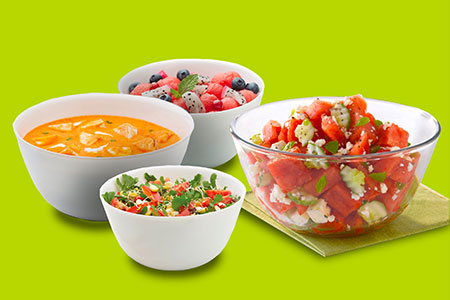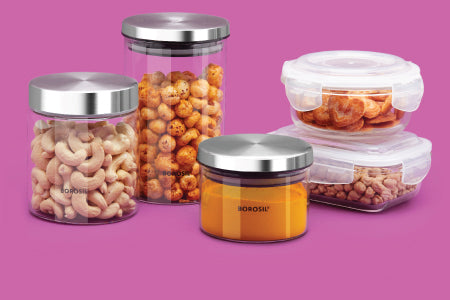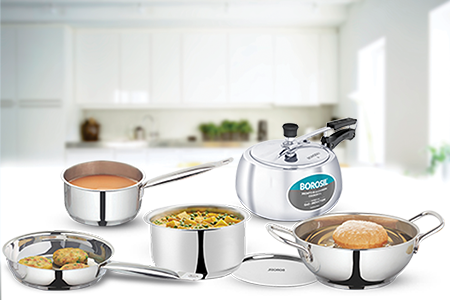
Healthy Avial Recipe
Avial Recipe: A Symphony of South Indian Flavours
Avial also spelled as Aviyal, is a delightful South Indian dish with a fascinating origin story. According to the legends, the mighty Bhima, one of the Pandava brothers from the Mahabharata epic, invented this dish during his 14-year exile. Bhima found himself in the royal kitchen of King Virata, taking on the role of a cook, and it was out of necessity that he created Avial.
Avial is a healthy medley of various vegetables, prepared in a luscious yoghurt and coconut sauce and perfected with a drizzle of coconut oil and fragrant curry leaves. To make the Avial dish unique, you can include seasonal vegetables available besides cauliflower or carrots. These include Ash gourd, suran, tendli, pumpkin, snake gourd, and raw plantain. The possibilities are endless! So wait no more and get creative with your veggie combinations as suitable.
Avial Variations
There are various ways to prepare the Avial recipe. The traditional method typically involves curd. However, some variations use raw mango, tamarind, or curd. The recipe below features curd, as this is how authentic Avial has always been made. This version isn't a curry but a slightly thicker variation where the coconut and yoghurt sauce lovingly envelops the veggies.
Avial Recipe: Step-by-Step Preparation
When making an Avial recipe, it's crucial to cook the vegetables well. They should be tender but not mushy or falling apart. Avoid adding too much water while cooking since the vegetables release their juices as they cook. It is useful to prepare the vegetables that take longer to cook than to add the more tender vegetables; later in the factor, you won't get a pot full of overcooked and mushy vegetables.
Ingredients
- Vegetables of your choice
- 1/2 cup of whipped curd
- 1 cup of blended coconut
- 3 Chillies
- 1 teaspoon Cumin
- 12-15 curry leaves
- 3-4 cups of water
- 1/2 teaspoon turmeric powder
- Salt to taste
- 1-2 teaspoon of coconut oil
Preparation Process
To get started, let's begin with a comprehensive guide to cooking:
Step 1
Select Your Veggies: Begin by choosing different fresh and seasonal vegetables. Opt for unique and colourful options like drumsticks, green beans, carrots, raw plantains, ash gourd, or any veggies you prefer.
Step 2
Rinse and Drain: Thoroughly wash the selected vegetables to remove impurities. Allow them to drain to get rid of excess water.
Step 3
Chop with Care: With patience, chop the vegetables in medium or long sticks or batons, somewhat resembling thick potato French fries. If you're using unripe bananas, soak them in water to prevent browning.
Step 4
Prepare the Coconut Paste: Take three green chillies, chop them up, one cup of freshly blended coconut and cumin seed worth 1 teaspoon, and put them into a blender. Make a rough paste by adding ½ cup of water and put aside for later.
Step 5
Cooking the Longer Cookers: Start by cooking the vegetables that require longer to become tender. It usually includes drumsticks, green beans, and elephant foot yam. Add 1 cup water, 1/2 teaspoon turmeric powder, and salt. Combine ingredients well; then, with a lid, cover the pan. Simmer for about 12 to 15 minutes until they're half-cooked.
Step 6
Bring the Swift Cookers: Add the other vegetables like plantains, ash gourd, Mangalore cucumber, and pumpkin to the cooker. Mix them with the partially cooked vegetables, cover your pan, and keep cooking.
Step 7
Don't Overlook Water Level: Monitor the water level closely during the cooking process. Add more hot water to keep from burning the dish. You want to be moist without it being a wet, soaking mix.
Step 8
Achieve Perfect Cook: Simmer the veggies until they're almost tender. Avoid overcooking, as we want them to retain their shape and texture.
Step 9
Introduce the Coconut Paste: Add the coconut paste you prepared earlier to the simmering vegetables. Mix it in gently to let those flavours meld beautifully.
Step 10
The Curd Connection: Now, it's time to add the whipped curd (yoghurt). The curd should blend seamlessly into the mixture.
Step 11
A Touch of Authenticity: For that authentic Avial dish flavour, add 1 to 2 tablespoons of coconut oil. It's a key ingredient you shouldn't swap for any other oil.
Step 12
The Finishing Touch: Add 12 to 15 fresh curry leaves. Stir the mixture well and put it to rest for a few minutes with the lid on.
Step 13
Serving Time: Serve your Avial hot or mild hot, steamed rice, papadoms and varutharacha sambar with a side of pickle. This meal will make your taste buds happy. It's healthy, hearty, filling, and full of flavour.
Remember, the Avial dish is quite customisable. If there are vegetables you don't enjoy, feel free to swap them for your favourites. Tofu or sprouts can be excellent alternatives to suit your taste. Suppose you prefer your Avial spicier or milder. For more heat, toss in extra fresh or red chillies. For a milder experience, use fewer chillies or skip them altogether. Your Avial, your rules!
Conclusion
Avial is more than a recipe; it's a journey across time and flavours. You relish having it as a comforting meal with steamed rice and some of the traditional accompaniments by your side or a shareable delicacy on festive occasions when you feast with family and friends. Celebrate the plateful as not just a serving of food but a piece of tradition, a taste bud offerer and a journey of your own into the world where, when it comes to food, there is no limit to our imagination. Enjoy!
Frequently Asked Questions
Avial offers flexibility; you can use a variety of fresh vegetables. Traditional choices include drumsticks, carrots, raw plantains, ash gourd, and green beans, but you can personalise your Avial with your preferred options.
Certainly! If you're not a fan of some veggies in the recipe, feel free to swap them for alternatives you enjoy. You can even replace them with tofu or sprouts to suit your taste.
Adapting the spice factor is simple. For a spicier dish, add more chillies during coconut paste preparation. To tone it down, use fewer chillies or skip them entirely, allowing you to tailor your Avial's spiciness to your liking.





















